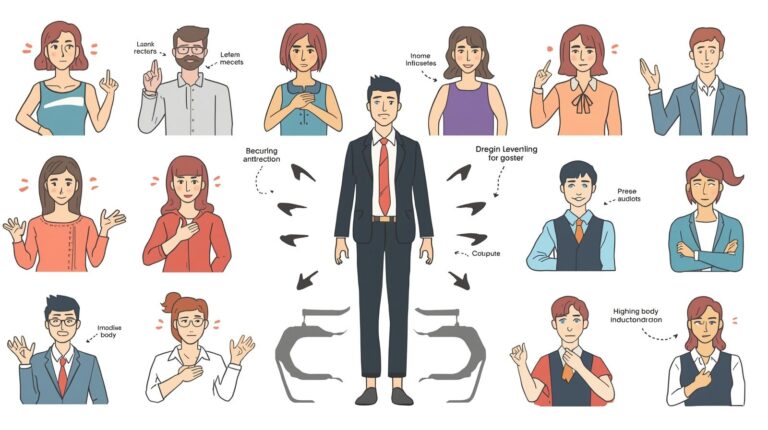Understanding Communication Barriers: How to Connect Effectively in the Workplace
Communication is something we do every day, yet it remains one of the most complex aspects of human interaction. From emails and meetings to casual hallway conversations, every interaction has the potential to succeed or fail depending on how we communicate. In the workplace, communication is not just about sharing information—it’s about building relationships, fostering collaboration, and ensuring that everyone is aligned toward shared goals. But no matter how skilled we think we are, communication barriers are everywhere, quietly undermining productivity and workplace harmony. Understanding these barriers is the first step toward overcoming them and becoming an effective communicator.
What Are Communication Barriers?
At its core, a communication barrier is anything that prevents the message from being received or understood as intended. This can be as simple as poor phrasing in an email or as complex as cultural differences that cause misunderstandings between colleagues. Communication barriers can be physical, psychological, semantic, or even environmental, and they impact how messages are interpreted.
For example, imagine a team meeting where a manager uses technical jargon that some employees are unfamiliar with. Even if the message is clear to the manager, the intended audience may misinterpret or miss key points entirely. This creates confusion, frustration, and inefficiency—a perfect example of a communication barrier at work.
Why Workplace Communication Barriers Matter
Ineffective communication can lead to mistakes, missed deadlines, and a breakdown of trust. Research consistently shows that poor communication is among the top contributors to workplace conflict and employee disengagement. On the other hand, teams that communicate effectively are more productive, innovative, and resilient. By identifying and addressing communication barriers, employees can create a more cohesive and high-functioning workplace.
Common Communication Barriers in the Workplace
While communication barriers can be unique to each environment, some are universally common. Recognizing them is the first step toward reducing their impact.
Language Barriers
One of the most obvious barriers is language. In global or multicultural workplaces, employees may speak different native languages or use industry-specific jargon that others do not understand. Even subtle differences in word choice can lead to misunderstandings. For instance, a phrase considered polite in one culture may be interpreted as evasive or vague in another.
The solution? Prioritize clarity. Use plain language, avoid slang, and be mindful of idioms that may confuse non-native speakers. When giving instructions, consider supplementing verbal communication with visual aids, written summaries, or demonstrations.
Cultural Barriers
Culture shapes how we communicate, what we value, and how we interpret messages. In some cultures, direct communication is seen as honest and efficient, while in others, indirect communication is preferred to maintain harmony. Misreading these cues can create tension.
For example, a manager from a direct communication culture may interpret a colleague’s hesitancy as lack of confidence, while the colleague sees it as respect and deference. Understanding cultural norms and adapting communication styles is crucial for bridging these gaps. Cultural awareness training can help employees navigate these differences more effectively.
Differences in Time and Place
Timing and location also play a significant role in communication. A message delivered in the middle of a hectic workday may not be received as intended. Similarly, remote work introduces challenges like time zone differences, digital fatigue, and the absence of non-verbal cues.
Planning communications with context in mind is essential. Choose the right moment, medium, and tone for your message. A detailed email might be more effective than a quick phone call for complex topics, while face-to-face conversations may be preferable for sensitive issues.
Psychological Barriers
Our internal mindset and emotions also affect how we communicate. Stress, fatigue, personal conflicts, and biases can cloud our judgment and lead to misunderstandings. For instance, an employee who feels undervalued may interpret constructive feedback as criticism, even if it’s intended to be helpful.
Building emotional intelligence—awareness of your own emotions and empathy for others—is key to overcoming these barriers. Listening actively, confirming understanding, and managing emotional responses can prevent many communication breakdowns.
Physical and Environmental Barriers
Finally, the physical environment itself can interfere with communication. Noise, poor lighting, interruptions, and even the layout of the workspace can hinder effective exchange of information. Open offices, while promoting collaboration, can sometimes create distractions that reduce focus.
Mitigating these barriers often requires practical adjustments: creating quiet spaces for focused discussions, using technology for virtual meetings, and establishing clear protocols for communication channels.
Strategies to Overcome Communication Barriers
Understanding barriers is only half the battle—the next step is developing strategies to overcome them.
Clarify Your Message: Whether spoken or written, ensure your message is clear and concise. Avoid ambiguous language and double-check that your key points are easily understood.
Active Listening: Communication is a two-way street. Listening attentively shows respect and ensures that you understand the message before responding. Reflect back what you’ve heard to confirm understanding.
Adapt to Your Audience: Consider the background, language proficiency, and cultural norms of your audience. Tailoring your communication style increases the likelihood that your message will be received as intended.
Ask Questions: Encourage dialogue by asking open-ended questions. This not only clarifies your understanding but also engages the other party in meaningful conversation.
Use Multiple Channels: Don’t rely on a single method of communication. Combine verbal, written, and visual communication to ensure your message is clear and reinforced.
Provide Feedback: Constructive feedback helps identify and correct misunderstandings early. It also reinforces positive communication practices.
Practice Patience and Empathy: Miscommunication is often unintentional. Approach misunderstandings with patience, and seek to understand the perspective of others.
Real-World Examples
Consider an international project team with members across different countries. Email communications led to delays because idiomatic expressions were misunderstood, and tone was misinterpreted. By implementing a standardized communication protocol—clarifying terminology, using clear subject lines, and holding weekly video check-ins—productivity increased and misunderstandings decreased significantly.
Another example is a busy office where employees often missed critical updates because messages were buried in long email threads. The company introduced a shared communication platform with clear categories for urgent and non-urgent messages. This small adjustment drastically improved internal communication and reduced errors.
The Role of Leaders in Overcoming Barriers
Leaders have a responsibility to model effective communication and address barriers proactively. By setting expectations, offering training, and creating an open environment where employees feel safe asking questions, leaders can dramatically improve communication across the organization.
Encouraging team members to share concerns about barriers, whether cultural, language-related, or technological, fosters an inclusive environment. Leaders who actively listen and implement solutions earn trust and enhance overall workplace performance.
Conclusion: Communication is a Continuous Journey
Effective communication is a skill that requires awareness, adaptability, and consistent practice. By understanding common communication barriers—language differences, cultural norms, timing, psychological factors, and environmental constraints—employees and leaders alike can bridge gaps, reduce misunderstandings, and strengthen collaboration.
In the modern workplace, where teams are diverse, remote, and fast-paced, overcoming communication barriers isn’t optional—it’s essential. By applying strategies such as active listening, audience adaptation, clear messaging, and feedback, you can transform your interactions from confusing to compelling.
Investing in effective communication skills pays dividends in productivity, workplace satisfaction, and employee engagement. Whether you’re speaking to a colleague, presenting to a board, or sending that all-important email, understanding and navigating barriers ensures your message is received, understood, and acted upon.
Communication may be complex, but with awareness and practice, it becomes a powerful tool for connection, collaboration, and success.


